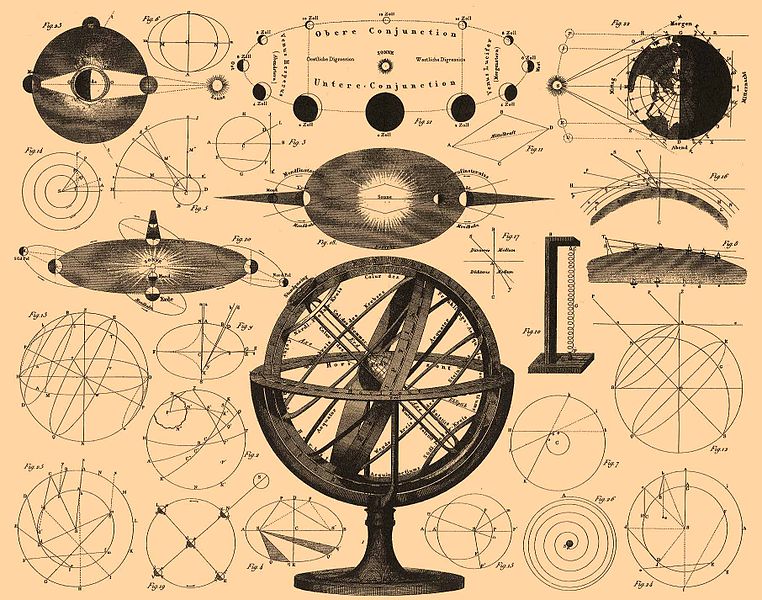[Written by Rowen Leverntz]
[Image Credit: WikimediaCommons//Illustration from Brockhaus and Efron Encyclopedic Dictionary]
Art can be seen as an expression of human imagination that creates an emotive response, and science is exploration and discovery of the human mind. Both surround our own perceptions of life from the mind itself, meaning there must be some comorbidity or connection. I believe we find art so impactful because of its innate interaction with science: the relationship between the two is a layered question, as the effects of experimental art and biological composure consistently overlap. We may be drawn to art itself through the paradox of familiarity and discovery.
Certain historical forms of art can show a closer connection to science than others. One example of this is the art of the Darb-e Imam shrine, which may represent how predetermined structures in the human mind relate to the art created. The pattern was an original piece of Islamic art; however the same pattern is coincidently present in other historic geometric designs. These same structures appear in maths, meaning a subconscious lure to this structure may have caused the creation of the pattern. This supports the theory that they are connected; art and science are intertwined in way that we enjoy when displayed visually.
The connection is taken much more literally within the subject of anatomy, as the human body becomes an artifice. The artistry of anatomy through history such as Leonardo di Vinci’s drawings highlights parallels between the human body and art. Once it is altered by a person, the biological structures become an artistic display. Modern Artists such as Damien Hirst have cut open living beings and created art from them – many heated debates about his work took place and whether dissecting a biological structure constitutes a piece of art. However, the deconstruction and reconstruction of an object is forming a creation and something entirely new from something familiar. Perhaps we could make the comparison that to research science is to discover new concepts for the human mind, and art is the use of concept to cause an emotive response and pleasure in the human mind.
This then brings the question: does art create pleasure because it is already a part of our predetermined brain structure? We, as humans, seek comfort and familiarity, so naturally we would find comfort in existing mental compositions displayed to us. This then comes across subconsciously in the historic art of our society. Art is therefore somewhere in-between familiarity and unique experimentation. This feeling of being thrown between may be what contributes to the emotive power of art. It ties in with biological boundaries and pushes us into a realm of human comfort.
The Body Works exhibit by Gunther Von Hagen expresses the same theory. Von Hagen creates exhibits from diseased bodies and people find beauty or disgust in his creations to varying degrees. Here, the structure of a body that sustains life is turned into art, at the hand of someone via their artistic vision. It causes a response because it is displaying something human that is so essential to every person but displaying it externally for all to see. Emotion is created through displaying natural things in a new way. The biology already exists and the internal organs perform so many crucial functions to sustain us all, but art here is created by displaying what we all know but perhaps can only imagine or view images of. This is our very life, our existence is dependent on the biology represented here through other physical human bodies and reflect very closely that of our own.
Therefore, we stand somewhat in between comfort and discovery in both subjects of science and art as we try to grow as a society. We cannot leave our prescribed perception and can only experiment in the aspects of our self we may have not discovered yet, but we continue to explore and express.

